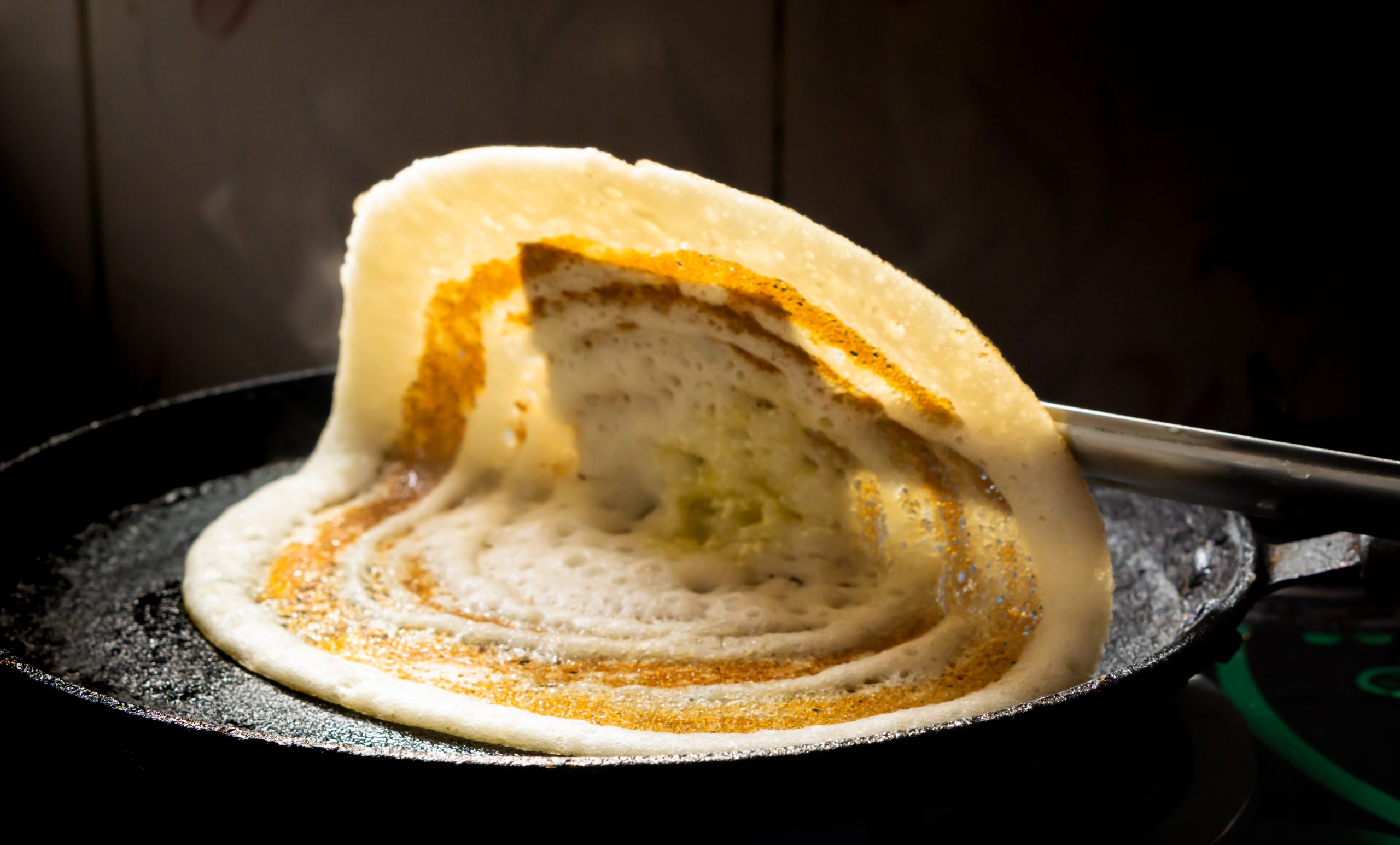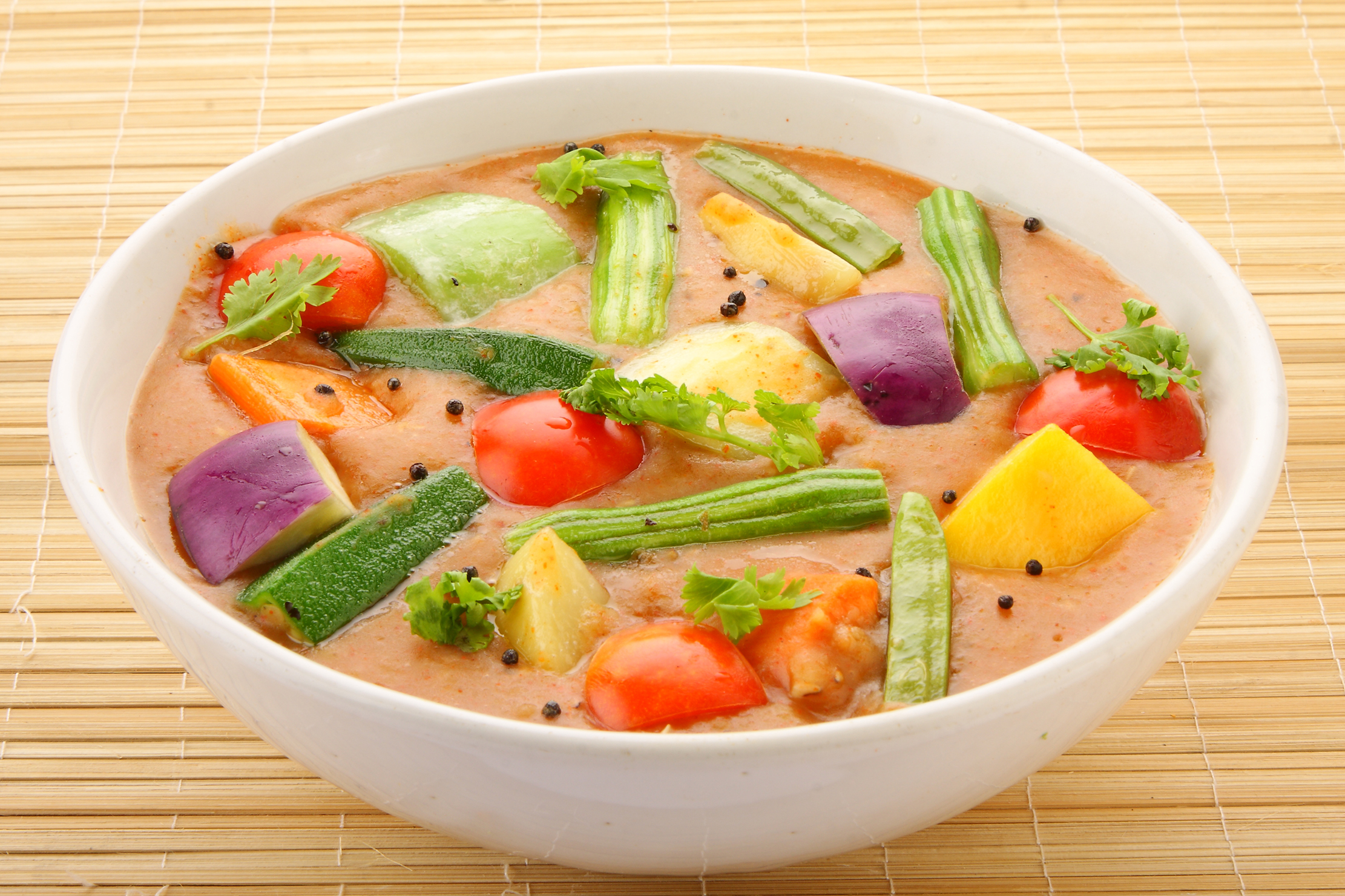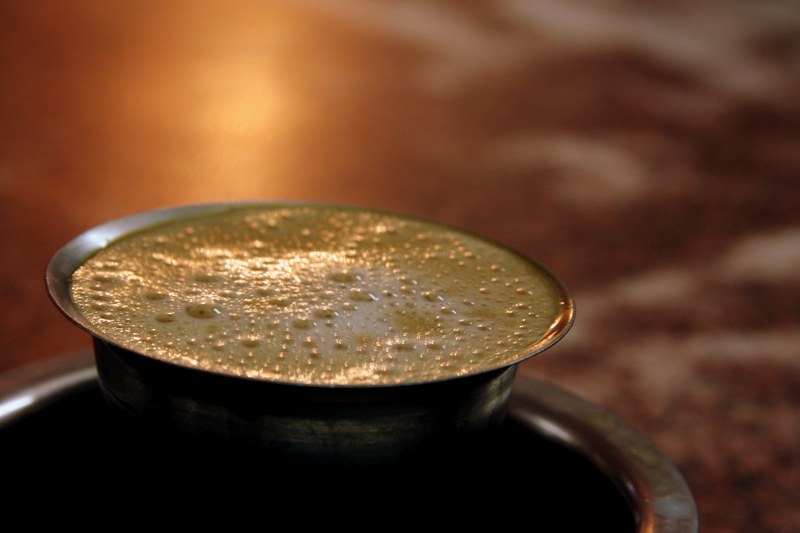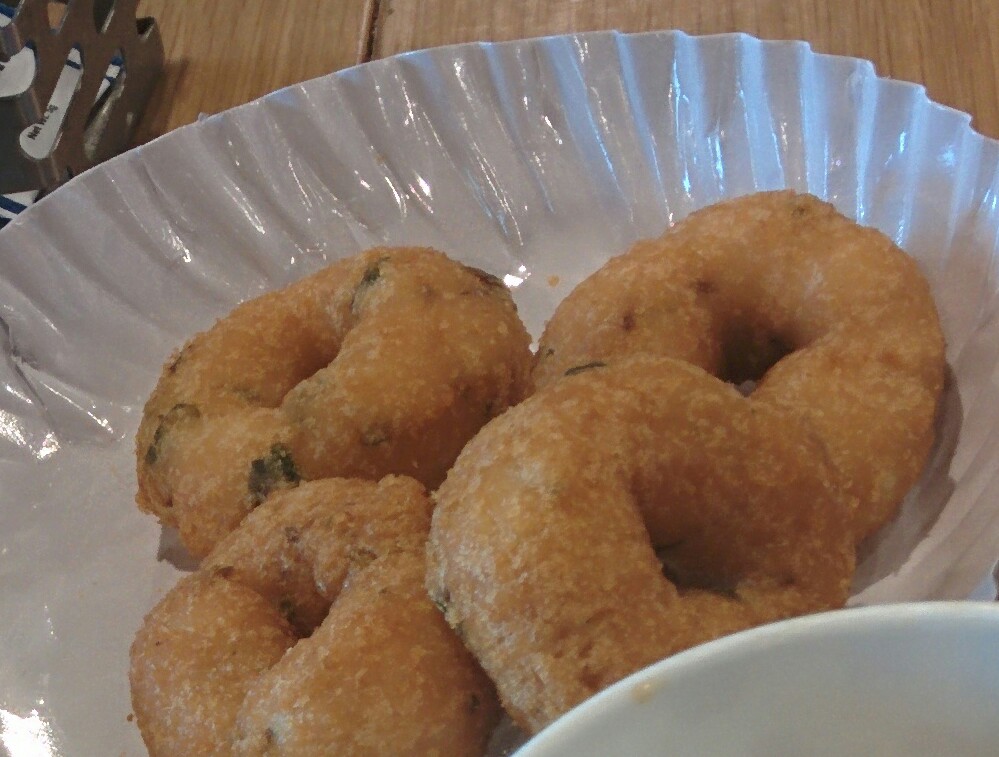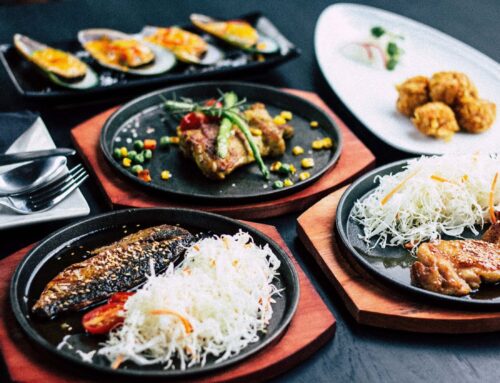Tamil Nadu, located on the southeastern coast of India, is not just known for its rich history and vibrant culture, but also for its delectable cuisine. The food in Tamil Nadu is a reflection of its diverse traditions and culinary heritage. From the humble street food to the elaborate feast served on banana leaves, Tamil Nadu offers a gastronomic experience that is sure to tantalize your taste buds. In this article, we will take a closer look at the top 10 must-try dishes in Tamil Nadu.
1. Idli and Sambar: A quintessential breakfast dish in Tamil Nadu, idli is a steamed rice cake made from fermented batter. It is usually served with sambar, a lentil-based vegetable stew, and coconut chutney. The soft and fluffy texture of idli combined with the tangy and spicy flavors of sambar make for a perfect start to the day.
2. Dosa: Another popular breakfast item, dosa is a thin and crispy pancake made from fermented rice and lentil batter. It can be enjoyed plain or filled with a variety of fillings such as potato masala, paneer, or cheese. Dosa is typically served with sambar and coconut chutney.
3. Pongal: This savory dish is a staple during the harvest festival of Pongal. It is made with rice, lentils, and spices, and is often flavored with ghee, cashews, and black pepper. Pongal is traditionally cooked in an earthen pot, giving it a unique flavor.
4. Chettinad Chicken: Hailing from the Chettinad region of Tamil Nadu, this spicy and flavorful chicken dish is a favorite among meat lovers. It is made with a blend of aromatic spices and served with rice or roti.
5. Meen Kuzhambu: A popular fish curry in Tamil Nadu, meen kuzhambu is made with a tangy tamarind base and a medley of spices. It is usually served with steamed rice and is a must-try for seafood enthusiasts.
6. Adai: Adai is a protein-rich pancake made from a mixture of lentils and rice. It is typically served with avial, a mixed vegetable curry, and coconut chutney. Adai is not only delicious but also a healthy option for those looking to include more plant-based protein in their diet.
7. Rasam: Rasam is a tangy and spicy soup made with tamarind, tomatoes, and a blend of spices. It is often served as a comforting drink or as an accompaniment to rice and other dishes. Rasam is known for its medicinal properties and is believed to aid digestion.
8. Parotta: Parotta is a flaky and layered flatbread made from maida (all-purpose flour). It is typically served with salna, a spicy gravy made with meat or vegetables. Parotta is a popular street food in Tamil Nadu and is best enjoyed hot off the griddle.
9. Payasam: No meal in Tamil Nadu is complete without a serving of payasam, a sweet pudding made with milk, rice, and jaggery. It is often flavored with cardamom, saffron, and nuts. Payasam is a popular dessert during festivals and special occasions.
10. Biryani: Though not native to Tamil Nadu, biryani has become a beloved dish in the region. It is made with fragrant basmati rice, meat (such as chicken, mutton, or fish), and a blend of spices. Biryani is often served with raita, a yogurt-based side dish.
These are just a few of the many mouthwatering dishes that Tamil Nadu has to offer. Whether you are a vegetarian or a non-vegetarian, there is something to suit every palate in this culinary paradise. So, the next time you visit Tamil Nadu, make sure to indulge in its delightful cuisine and savor the flavors of this vibrant state.
1. Idli: The Perfect Breakfast Delight
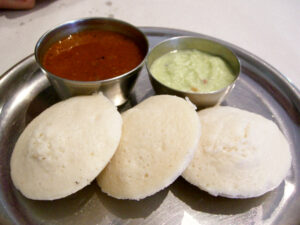
When it comes to breakfast in Tamil Nadu, nothing can beat the popularity of idli. These soft, fluffy rice cakes are made by fermenting a batter of rice and lentils. Served with piping hot sambar and coconut chutney, idli is a staple in every Tamil household. Whether you prefer the traditional white idli or the healthier brown rice idli, this dish is a must-try for its simplicity and taste.
The process of making idli is an art in itself. The rice and lentils are soaked overnight, then ground into a smooth paste. This paste is left to ferment for several hours, allowing the natural bacteria to work its magic and give the idli its characteristic texture and flavor. The fermented batter is then poured into special molds and steamed until cooked through. The result is a light and airy rice cake that is both satisfying and easy to digest.
Idli is not just a breakfast dish – it can be enjoyed at any time of the day. In fact, many Tamil households have idli as a snack or even for dinner. It is a versatile dish that can be paired with a variety of accompaniments. Apart from sambar and coconut chutney, idli can be served with tomato chutney, coriander chutney, or even a tangy tamarind chutney. The possibilities are endless.
One of the reasons why idli is so popular is its health benefits. It is a low-calorie dish that is rich in protein and fiber. The fermentation process increases the bioavailability of nutrients in the rice and lentils, making idli a nutritious choice for breakfast. It is also gluten-free and easily digestible, making it suitable for people with dietary restrictions or sensitive stomachs.
Idli has not only conquered the hearts of people in Tamil Nadu but has also gained popularity across India and even internationally. It is now a common sight in Indian restaurants around the world, and many people have fallen in love with its simplicity and delicious taste. So, if you haven’t tried idli yet, it’s time to give it a go and experience the joy of this perfect breakfast delight.
2. Dosa: A South Indian Classic
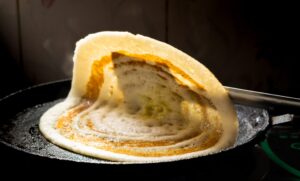
No discussion about Tamil Nadu’s cuisine would be complete without mentioning dosa. This thin, crispy pancake made from fermented rice and lentil batter is a favorite among locals and tourists alike. From the classic masala dosa filled with a spiced potato filling to the paper-thin ghee roast, there is a dosa variant to suit every palate. Don’t forget to pair it with coconut chutney and tomato-onion chutney for a burst of flavors.
3. Pongal: A Hearty Rice Dish
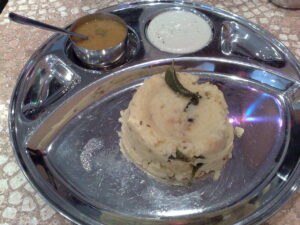
Pongal, a popular dish during the harvest festival of Tamil Nadu, is a delicious blend of rice and lentils cooked together and flavored with ghee, cashews, and spices. This creamy and savory dish is often served with coconut chutney and sambar. The aroma of freshly cooked pongal is enough to make your mouth water, and its comforting taste will keep you coming back for more.
Rasam, a tangy and spicy soup, is a staple in Tamil Nadu cuisine. Made with tamarind juice, tomatoes, and a unique blend of spices, rasam is known for its distinct flavor and medicinal properties. It is often served as a second course in a traditional South Indian meal or enjoyed as a comforting soup on a rainy day. The combination of hot rasam and steamed rice is a match made in culinary heaven.
5. Sambar: The Perfect Accompaniment
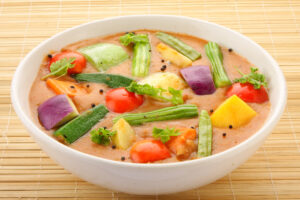
Sambar, a lentil-based vegetable stew, is a quintessential part of Tamil Nadu cuisine. Made with a flavorful mix of lentils, tamarind, and a medley of vegetables, sambar is the perfect accompaniment to idli, dosa, and rice. The aroma of freshly ground spices and the tanginess of tamarind make sambar a true culinary delight. Don’t be surprised if you find yourself asking for a second helping!
The popularity of sambar extends far beyond Tamil Nadu. It has become a beloved dish in many other parts of India and even internationally. The rich and complex flavors of sambar have captured the hearts and taste buds of people from all walks of life.
What makes sambar truly unique is the careful balance of flavors achieved through the combination of lentils, spices, and vegetables. The lentils provide a creamy and velvety texture to the stew, while the tamarind adds a tangy and slightly sour taste. The medley of vegetables, which can include drumsticks, carrots, potatoes, and onions, adds a variety of textures and flavors to the dish.
To prepare sambar, the lentils are first cooked until they are soft and mushy. Meanwhile, a spice blend is prepared by roasting and grinding a combination of coriander seeds, cumin seeds, fenugreek seeds, black peppercorns, and dried red chilies. This spice blend is then added to the cooked lentils along with the tamarind pulp and vegetables. The sambar is simmered until the flavors meld together and the vegetables are tender.
Each household in Tamil Nadu has its own variation of sambar, with slight differences in the choice of vegetables and spices used. Some prefer a spicier version, while others like it milder. Regardless of the variations, sambar remains a staple dish in Tamil Nadu households and is often enjoyed as a comforting meal during lunch or dinner.
Sambar is not only delicious but also nutritious. Lentils are a good source of protein, fiber, and essential minerals. The vegetables in sambar provide a range of vitamins and antioxidants. Together, they make sambar a wholesome and satisfying dish.
Whether you are a fan of South Indian cuisine or just looking to explore new flavors, sambar is a must-try dish. Its versatility allows it to be enjoyed with a variety of dishes, from the traditional idli and dosa to steamed rice and even bread. So, next time you have the opportunity, indulge in a bowl of piping hot sambar and experience the magic of this quintessential Tamil Nadu delicacy.
Not only is Tamil Nadu biryani known for its rich flavors, but it also has a unique cooking technique that sets it apart from other regional variations. The rice and meat are cooked separately before being layered together in a handi (a traditional Indian cooking pot) and sealed with dough. This process allows the flavors to meld together and creates a biryani that is incredibly tender and aromatic.
One of the key ingredients that gives Tamil Nadu biryani its distinct taste is the use of ghee. Ghee, or clarified butter, adds a rich and buttery flavor to the dish, making it even more indulgent. The use of whole spices such as cloves, cinnamon, and cardamom further enhances the aroma and taste of the biryani.
Another unique aspect of Tamil Nadu biryani is the addition of a special spice blend known as “biryani masala.” This masala is made by grinding together a combination of spices like coriander seeds, cumin seeds, fennel seeds, black peppercorns, and dried red chilies. The freshly ground masala adds a depth of flavor to the biryani and elevates it to a whole new level.
When it comes to choosing the meat for Tamil Nadu biryani, both chicken and mutton are popular choices. The meat is marinated in a mixture of yogurt, ginger-garlic paste, and a variety of spices to tenderize it and infuse it with flavor. This ensures that every bite of the biryani is packed with succulent meat that is bursting with spices.
To complement the biryani, it is often served with raita, a yogurt-based side dish, and a boiled egg. The cool and refreshing raita helps balance out the richness of the biryani, while the boiled egg adds a touch of protein to the meal.
Whether you are a fan of biryani or new to this delectable dish, Tamil Nadu biryani is a must-try. Its royal flavors and exquisite preparation make it a true culinary gem that will transport you to the palaces of ancient India.
7. Ulunthu Vadai: A Crispy Delight

Medhu vada
Ulunthu vadai, also known as medu vada, is a popular South Indian snack made from soaked and ground black lentils. Shaped like a donut, these crispy fritters have a soft and fluffy texture on the inside. Served with coconut chutney and sambar, ulunthu vadai is a favorite among locals and tourists alike. Whether you enjoy it as a snack or as part of a meal, this crispy delight is a must-try.
The process of making ulunthu vadai starts with soaking black lentils, also known as urad dal, for a few hours. This step is crucial as it helps in softening the lentils and makes them easier to grind. Once the lentils are soaked, they are drained and ground into a smooth paste. The consistency of the batter is important as it determines the texture of the vadai. It should be thick enough to hold its shape but not too thick that it becomes dense.
After grinding the lentils, the batter is seasoned with spices such as cumin seeds, black pepper, ginger, and curry leaves. These ingredients add a burst of flavor to the vadai and complement the earthy taste of the lentils. The batter is then left to ferment for a few hours, allowing the flavors to develop and the batter to become light and airy.
Once the batter has fermented, it is time to shape the vadai. Traditionally, a small portion of the batter is taken in the hand and shaped into a donut-like ring with a hole in the center. This shape allows the vadai to cook evenly and ensures a crisp exterior. The shaped vadai is then carefully dropped into hot oil and fried until golden brown and crispy.
When served, ulunthu vadai is often accompanied by coconut chutney and sambar. The coconut chutney is made with freshly grated coconut, green chilies, ginger, and tempered with mustard seeds and curry leaves. It provides a refreshing and creamy contrast to the crispy vadai. Sambar, a tangy and spicy lentil soup, adds another layer of flavor and makes the vadai a complete and satisfying meal.
Ulunthu vadai is not only a popular snack but also a staple in festive and special occasions. It is often served as part of a traditional South Indian breakfast or as an appetizer during weddings and celebrations. The combination of the crispy exterior and soft interior, along with the aromatic spices, makes ulunthu vadai a delightful treat for the taste buds.
8. Filter Coffee: A South Indian Specialty

No visit to Tamil Nadu is complete without sipping a cup of aromatic filter coffee. Made by brewing freshly ground coffee beans in a traditional metal filter, filter coffee is known for its strong flavor and unique brewing process. Served in a stainless steel tumbler and dabarah, the frothy and flavorful filter coffee is a perfect pick-me-up to start your day or to enjoy after a hearty meal.
The process of making filter coffee is an art in itself. It starts with selecting the right blend of coffee beans, usually a mix of Arabica and Robusta, which are then roasted to perfection. The roasted beans are then ground to a medium-coarse consistency, ensuring that the flavors are extracted evenly during the brewing process.
Next comes the traditional metal filter, also known as a “coffee filter” or “kaapi filter.” This filter consists of two cylindrical cups, one with small perforations and the other with a solid base. The ground coffee is placed in the upper cup, and hot water is poured over it. The water slowly percolates through the coffee, extracting its rich flavors and aroma.
As the coffee drips into the lower cup, it forms a thick, dark decoction. This decoction is then mixed with hot milk and sugar, according to personal preference, to create the perfect cup of filter coffee. The coffee is typically poured back and forth between the tumbler and dabarah from a height, creating a frothy layer on top.
One of the key factors that sets filter coffee apart is the use of chicory. Chicory, a root derived from the endive plant, is roasted and ground along with the coffee beans. It adds a unique bitterness and enhances the flavor of the coffee. The proportion of chicory to coffee varies, with some preferring a higher percentage for a stronger taste.
Filter coffee is deeply ingrained in the culture of South India, especially Tamil Nadu. It is not just a beverage but a way of life. It is often served as a welcoming gesture to guests and is a common sight in households, restaurants, and even roadside stalls. The aroma of freshly brewed filter coffee wafts through the air, enticing passersby and inviting them to take a moment to savor its rich flavors.
So, the next time you find yourself in Tamil Nadu, make sure to indulge in a cup of filter coffee. Experience the warmth of South Indian hospitality and let the flavors of this traditional beverage transport you to a world of pure bliss.
Curd rice, also known as thayir sadam, is not only a simple and refreshing dish but also a cooling comfort that provides numerous health benefits. This traditional Tamil dish is a staple in every Tamil meal and is loved for its creamy texture and tangy flavor. The preparation of curd rice involves mixing cooked rice with yogurt, which not only adds a delightful creaminess but also provides a host of health benefits.
Yogurt, the main ingredient in curd rice, is a probiotic powerhouse that is packed with beneficial bacteria. These live cultures help in maintaining a healthy gut by promoting the growth of good bacteria and inhibiting the growth of harmful bacteria. Consuming curd rice regularly can improve digestion, reduce bloating, and alleviate gastrointestinal issues.
Moreover, curd rice is an excellent source of calcium, protein, and vitamins. Calcium is essential for maintaining strong bones and teeth, while protein is crucial for muscle growth and repair. The vitamins present in curd rice, such as vitamin B12, riboflavin, and vitamin D, play a vital role in maintaining overall health and well-being.
Additionally, the tempering of mustard seeds, curry leaves, and green chilies in curd rice not only enhances its flavor but also adds a touch of spiciness. Mustard seeds are rich in antioxidants and have anti-inflammatory properties, while curry leaves are known for their digestive benefits. Green chilies, on the other hand, contain capsaicin, a compound that can boost metabolism and aid in weight loss.
One of the reasons why curd rice is considered a cooling comfort is its ability to soothe the palate and provide relief from spicy and flavorful dishes. The combination of yogurt and rice creates a creamy and soothing texture that helps to balance the heat from other dishes. It is often served at the end of a meal to cleanse the palate and provide a refreshing finish.
Overall, curd rice is not just a delicious and comforting dish but also a nutritious addition to any meal. Its cooling properties, digestive benefits, and nutritional value make it a popular choice in Tamil Nadu and beyond. So, the next time you crave a cooling comfort that is both satisfying and healthy, reach for a bowl of curd rice and experience its delightful flavors and numerous health benefits.
10. Paniyaaram: A Unique Delicacy
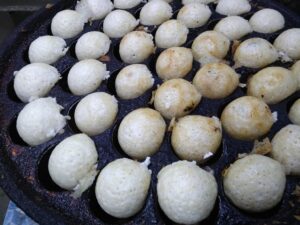
Paniyaaram, a unique dish made from fermented rice and lentil batter, is a specialty of Tamil Nadu. Cooked in a special paniyaaram pan, these bite-sized dumplings are crispy on the outside and soft on the inside. Whether you prefer the savory kuzhi paniyaaram or the sweet appam, these little delights are a must-try for their unique taste and texture.
But what makes paniyaaram truly special is the versatility it offers. While the traditional version is made with rice and lentils, modern variations have emerged that cater to different dietary preferences. For instance, there are paniyaaram recipes that use millets instead of rice, making it a healthier option for those who are conscious of their diet. Additionally, the fillings inside the paniyaaram can vary, ranging from classic coconut chutney to spicy masala. This allows individuals to experiment and create their own unique flavor combinations.
Another interesting aspect of paniyaaram is its cultural significance. In Tamil Nadu, paniyaaram is not just a dish; it is a symbol of togetherness and celebration. It is commonly prepared during festivals and special occasions, where families come together to enjoy this delectable treat. The process of making paniyaaram becomes a communal activity, with everyone contributing to the preparation and enjoying the final product. This communal aspect adds an extra layer of flavor and warmth to the dish, making it even more enjoyable.
Moreover, paniyaaram is not limited to just Tamil Nadu. It has gained popularity across the country and even internationally, thanks to its unique taste and easy preparation. In fact, many restaurants and food stalls outside of Tamil Nadu have started including paniyaaram in their menus, attracting food enthusiasts who are eager to explore the diverse flavors of Indian cuisine.
So, whether you are a food lover looking to try something new or a traveler wanting to experience the culinary delights of Tamil Nadu, paniyaaram is a dish that should not be missed. Its crispy exterior, soft interior, and endless flavor possibilities make it a true gastronomic delight. So, the next time you find yourself in Tamil Nadu or come across a paniyaaram recipe, don’t hesitate to give it a try and embark on a culinary adventure like no other.


